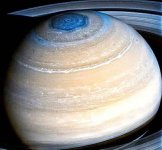You are using an out of date browser. It may not display this or other websites correctly.
You should upgrade or use an alternative browser.
You should upgrade or use an alternative browser.
PLAY Show Me something Nice!
- Thread starter packyderms_wife
- Start date
SurvivalRing
Rich Fleetwood - Founder - author/coder/podcaster
SurvivalRing
Rich Fleetwood - Founder - author/coder/podcaster
SurvivalRing
Rich Fleetwood - Founder - author/coder/podcaster
StarryEyedLad
désespéré pour le ciel
StarryEyedLad
désespéré pour le ciel
StarryEyedLad
désespéré pour le ciel
StarryEyedLad
désespéré pour le ciel
StarryEyedLad
désespéré pour le ciel
StarryEyedLad
désespéré pour le ciel
StarryEyedLad
désespéré pour le ciel
StarryEyedLad
désespéré pour le ciel
StarryEyedLad
désespéré pour le ciel
StarryEyedLad
désespéré pour le ciel
StarryEyedLad
désespéré pour le ciel
StarryEyedLad
désespéré pour le ciel
StarryEyedLad
désespéré pour le ciel
StarryEyedLad
désespéré pour le ciel
StarryEyedLad
désespéré pour le ciel
StarryEyedLad
désespéré pour le ciel
StarryEyedLad
désespéré pour le ciel
StarryEyedLad
désespéré pour le ciel
StarryEyedLad
désespéré pour le ciel
SurvivalRing
Rich Fleetwood - Founder - author/coder/podcaster
SurvivalRing
Rich Fleetwood - Founder - author/coder/podcaster
SurvivalRing
Rich Fleetwood - Founder - author/coder/podcaster
SurvivalRing
Rich Fleetwood - Founder - author/coder/podcaster
SurvivalRing
Rich Fleetwood - Founder - author/coder/podcaster
SurvivalRing
Rich Fleetwood - Founder - author/coder/podcaster
SurvivalRing
Rich Fleetwood - Founder - author/coder/podcaster
SurvivalRing
Rich Fleetwood - Founder - author/coder/podcaster
SurvivalRing
Rich Fleetwood - Founder - author/coder/podcaster
SurvivalRing
Rich Fleetwood - Founder - author/coder/podcaster
SurvivalRing
Rich Fleetwood - Founder - author/coder/podcaster
SurvivalRing
Rich Fleetwood - Founder - author/coder/podcaster
SurvivalRing
Rich Fleetwood - Founder - author/coder/podcaster
Profit of Doom
Dismember
Notice the hexagon. How many sides in a hexagon? What planet is that number from the sun?
SurvivalRing
Rich Fleetwood - Founder - author/coder/podcaster
Explanations for hexagon shape…Notice the hexagon. How many sides in a hexagon? What planet is that number from the sun?
One hypothesis, developed at Oxford University, is that the hexagon forms where there is a steep latitudinal gradient in the speed of the atmospheric winds in Saturn's atmosphere.

Saturn's hexagon - Wikipedia
Saturn's hexagon is a persistent approximately hexagonal cloud pattern around the north pole of the planet Saturn, located at about 78°N.[1][2][3] The sides of the hexagon are about 14,500 km (9,000 mi) long,[4][5][6][7]which is about 2,000 km (1,200 mi) longer than the diameter of Earth.[8] The hexagon may be a bit more than 29,000 km (18,000 mi) wide,[9]may be 300 km (190 mi) high, and may be a jet stream made of atmospheric gases moving at 320 km/h (200 mph).[4][5][10] It rotates with a period of 10h 39m 24s, the same period as Saturn's radio emissions from its interior.[11]The hexagon does not shift in longitude like other clouds in the visible atmosphere.[12]

A partial view of Saturn's north pole, 2016
Saturn's hexagon was discovered during the Voyager mission in 1981, and was later revisited by Cassini-Huygens in 2006. During the Cassini mission, the hexagon changed from a mostly blue color to more of a golden color.
Saturn's south pole does not have a hexagon, as verified by Hubble observations. It does, however, have a vortex, and there is also a vortex inside the northern hexagon.[13] Multiple hypotheses for the hexagonal cloud pattern have been developed.
jward
passin' thru
Snow globe in Leavenworth tonight! #wawx



View: https://twitter.com/SirlinJohn/status/1733672186123264424?s=20



View: https://twitter.com/SirlinJohn/status/1733672186123264424?s=20






































